Furniture Blog
Custom Furniture Gallery
Custom Credenza with Parquetry
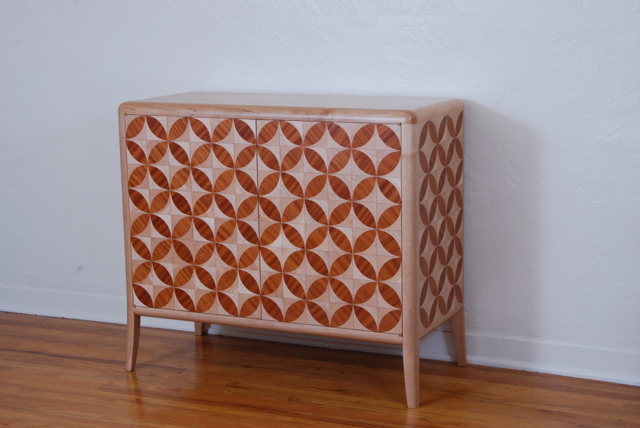
The great jazz saxophonist John Coltrane was known for taking musical phrases and exploring them from every angle. Forward, backward, inside out. He would try out every combination of notes to see where it would lead him. As a designer and builder of custom furniture I like to do the same thing. Sometimes it's a certain shape of leg mixed with a molding that can be pushed up into an armoire or squished down to be a credenza. I've played with curves that were almost straight lines and others that were nearly circles. It's part of what makes this business so interesting. I like to try different permutations of the same idea and see where I end up. Recently I've been fooling around with the parquetry pattern on this custom credenza. I first used it to decorate a handful of thresholds for a client near Santa Fe. That got me interested in trying it out on some furniture pieces.
This style of parquetry is called Boule work. In this kind of work you stack up veneers of both species of wood, tape them into packets and cut multiple pieces at the same time on the scroll saw. This gives you equal numbers of all of the parts in each species. The result is that in the end you have two sets of faces in opposite color patterns. The desk below was made with the 'scrap' from the credenza. As Coltrane would've told you, turning the same parts around can give you a completely different feel.
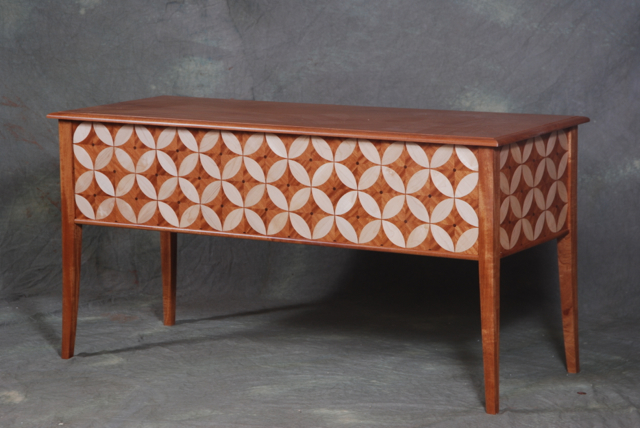
Desk with Parquetry

Parquetry is a term you don't hear much in this country. It is the art of doing parquet work. Still not sounding familiar? Parquet is pronounced Par-Kay and we generally hear about it in terms of parquet flooring; usually strips of floor boards arranged in a basketweave pattern with their grain running in alternating directions. Parquetry has an extremely long history, however, in some cases involving kings and their furniture.
At it's most basic, parquetry is a repeating pattern created by cutting wood veneers into geometric shapes, piecing them together and adhering them to a substrate. Usually the pattern is made up of straight lines since they are easier to cut. On some elaborate furniture from the 16th and 17th centuries parquetry was used as a border or a background to a marquetry design. While marquetry and parquetry are similar in their construction techniques, marquetry is more pictorial than parquetry. To give you an idea of the differences, the custom credenza below is an example of a marquetry piece I built a few years ago.
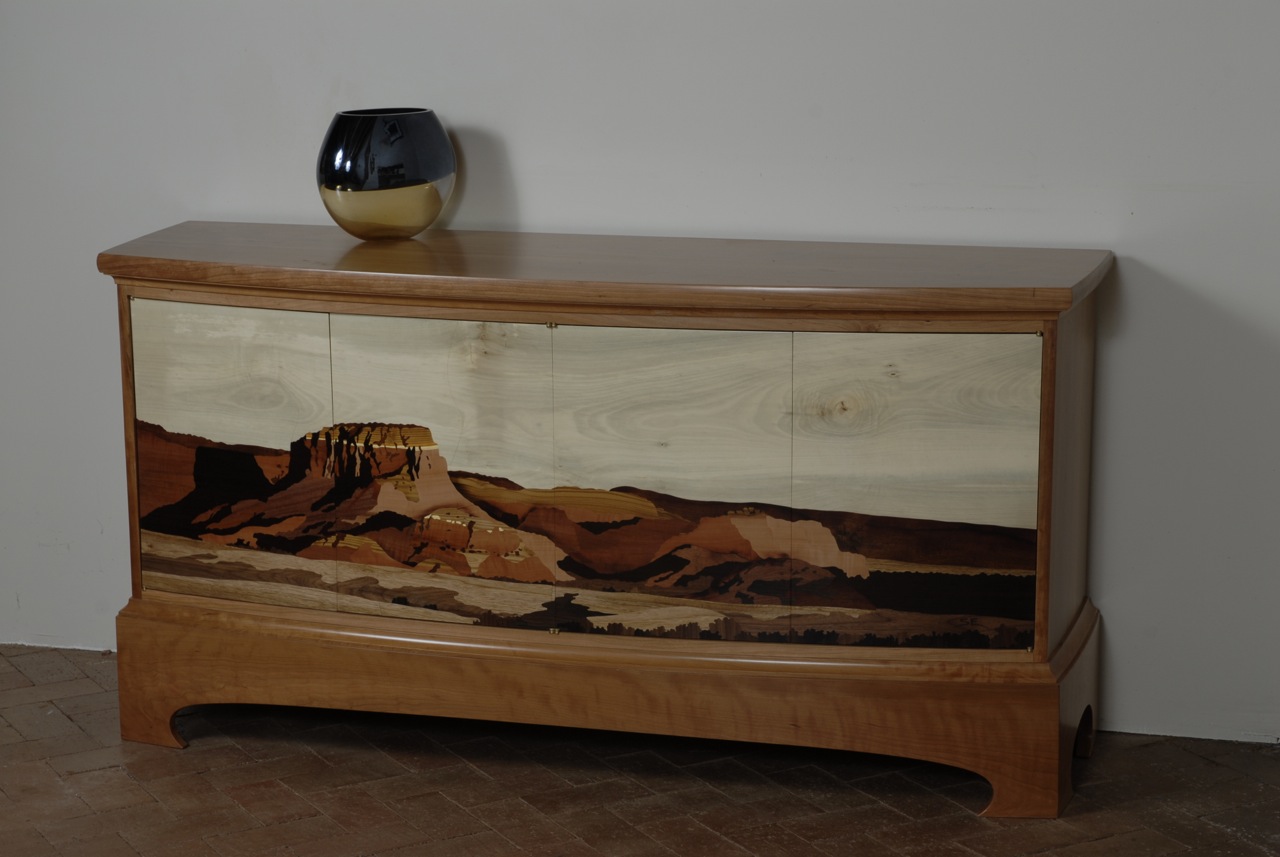
A few months ago I was contracted to do panels of parquetry decoration on some thresholds. I came up with a repeating Moroccan geometric pattern for that project and it got me excited about the possibilities for using the same pattern on a furniture project. I didn't start out with a design for a piece of furniture that I was going to put parquetry on. Instead I began with the parquetry pattern and just let it draw me along.
Moroccan style parquetry
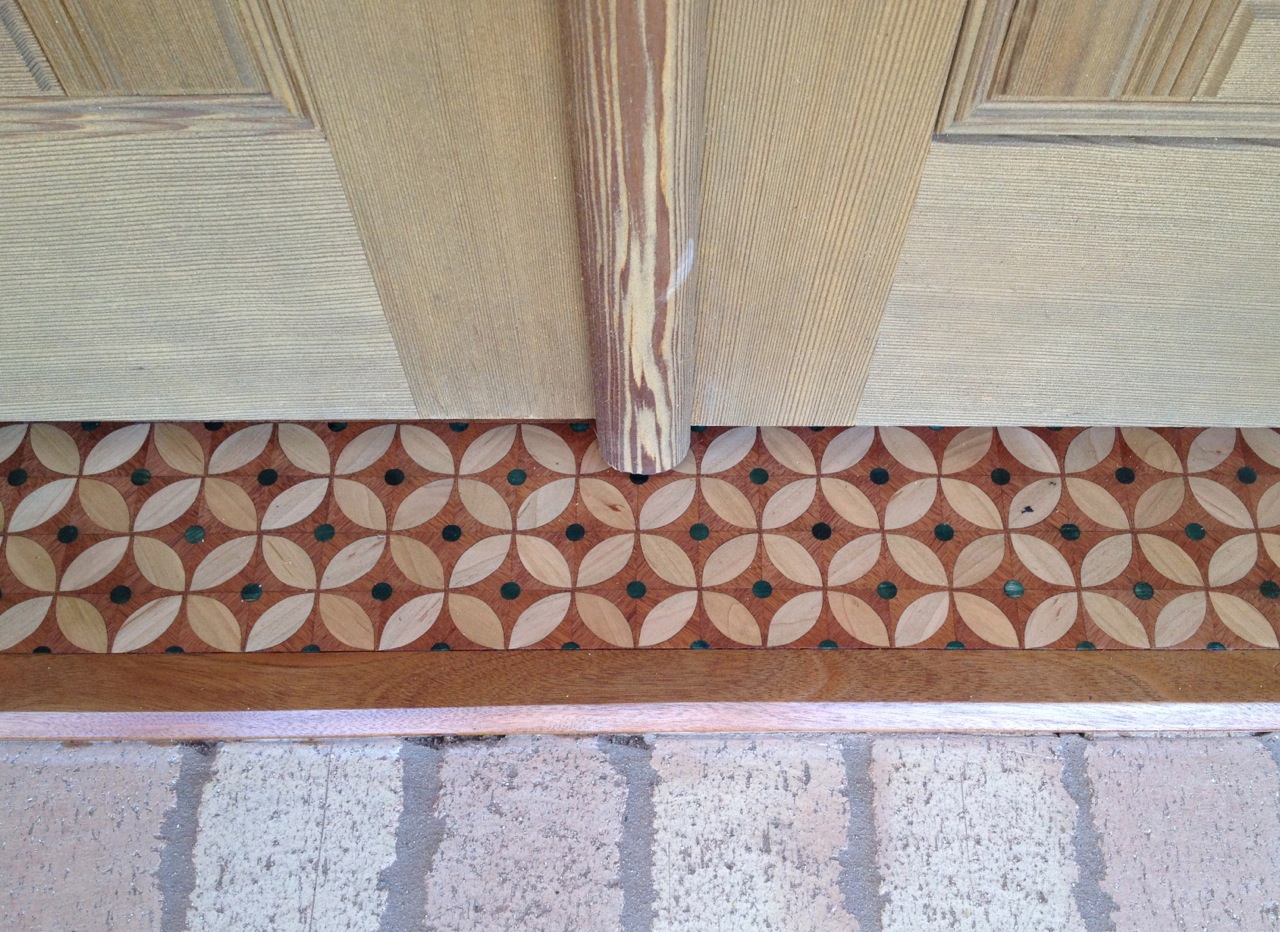
I’ve been working on an interesting job, off and on, for the last year or so. I started out building a complicated pair of doors and moved on to making some large gates, doing a bit of carving on some beams, building a carved desk and another desk that wasn’t carved. It’s been great. Each one of the pieces has been different and challenging in it’s own way and I love the variety.
A few months ago the decorator on the job mentioned to me that the client wanted to do something to spruce up the thresholds in one area of the place. They had run it by some of the other craftsmen on the job and no one had come up with any good ideas. There had been talk of carving something, inlaying tile, routing in a pattern, but nothing had really taken hold. Did I have any ideas? This is right up my alley. Creative problem solving 2.0.
The first issue was that the thresholds were already set into the slab, with finished tile laid around them. There was no chance of pulling them out and taking them to the shop to do whatever was going to be done to them. This meant that I was looking at either doing lots of careful work on my hands and knees, or I was going to have to figure out something to make in the shop that I could then go back and install when it was done. I considered for a while making some sort of router template that I could use to route in a design and then inlay wood into the recess that I’d routed. The thought of doing that much careful work while crawling, with plenty of opportunities to make a mistake kind of gave me the screaming willies. Then I landed on the idea of doing a parquetry pattern. That meant that I could do the bulk of the work in the shop and then take it to the job for installation. The rough plan would be to make up parquetry faces out of shop made veneers and then laminate the parquetry onto a thin substrate. These would be cut to precise uniform sizes so that I could make router templates to cut the recess into the thresholds that the parquetry would drop perfectly into. Glue them down, sand them flush and finish in place. No problem.
A custom carved desk

One of the things I like about being a maker of one-of-a-kind custom furniture is the variety. Every client has their own aesthetic and they each want something different. If you, as the builder, are ready to say yes to any kind of challenge you can find yourself in some interesting territory. That attitude has had me making everything from marquetry art pieces to airplane wings. Having clients with their own ideas keeps things fresh for me. Left to your own devices it's possible to find yourself in a rut of your own making.
A client of mine recently asked me to build a desk for his wife that wasn't like any other furniture I've ever made. He wanted it to match an old side table that they already had which might have come from India or Morocco originally. The side table was pretty interesting. It had a wrought iron grille under a glass top, turned legs, an antiqued, painted finish and lots of carving. To give myself something to work from I took a couple of snapshots of it and went home to come up with a bid.
Building a round side table with a shelf
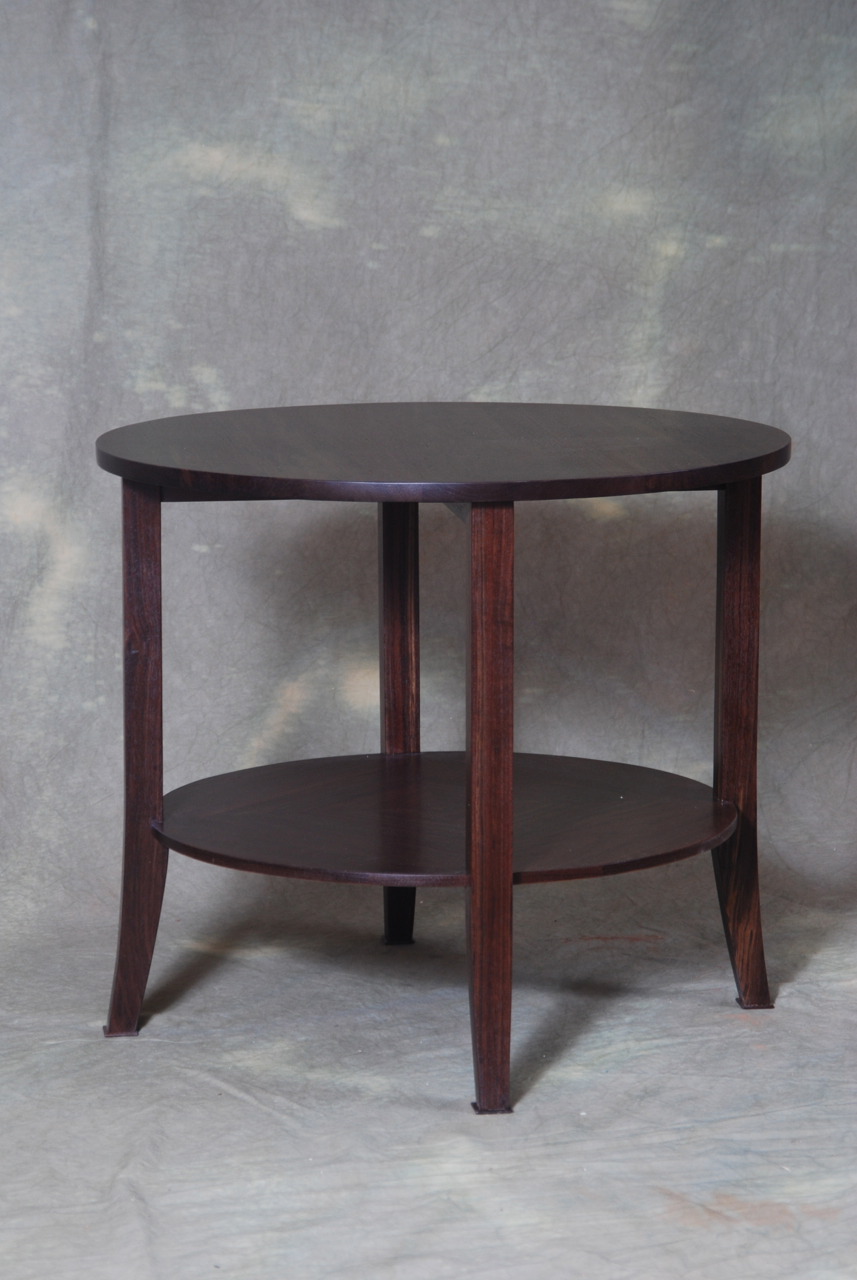
As a furniture designer I have a fondness for building my own designs. I love meeting with a client, talking about the furniture they need and then designing them their perfect piece. It's like alchemy when you are able to take a short conversation and a few pencil sketches and manage to come up with something completely new that your client absolutely loves.
As a furniture maker I enjoy the challenge of figuring out the most efficient way to build pieces of custom furniture whether or not they are my design. In my 23 year career I have rarely built the same thing twice so I am constantly solving new construction puzzles. In my business I am regularly asked to build pieces of furniture that look like something the client has found but that they can't get in the size or wood species that they want. What I usually get to work from in these situations is a small image that they have scanned out of a magazine or catalog, along with some dimensions. It's up to me to figure out how to build it and then guess how long it will take me to do that so that I can bid the job. It's a new chess match every day.
A Pair of true divided light doors
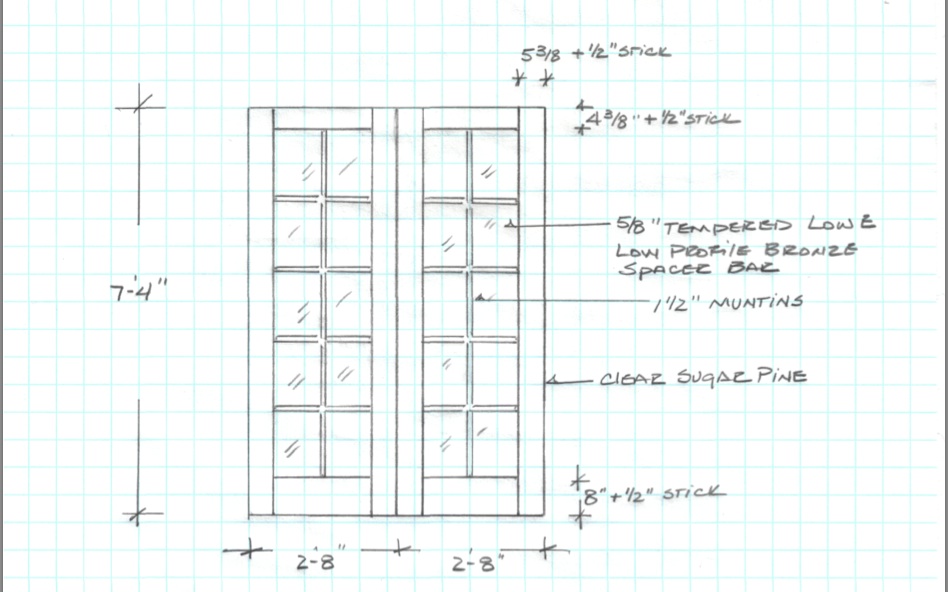
The path to enlightenment is long. And as anyone who has been to one of Santa Fe's many "Spiritual Retreats" could surely attest, it can be expensive. If someone tells you that there is only One True Path - be it in religion, politics, canoe paddling, love or woodworking - you should probably run screaming the other way. Personally, it took me years to reach my current state of Bliss. In this case I'm talking about Door Bliss. As much as I would love, like any good Guru, to charge you $899.95 to bring you to Enlightenment, in this case (just this once) I'm gonna give it to you for free.
Building the Mattawa - a small Tandem Canoe
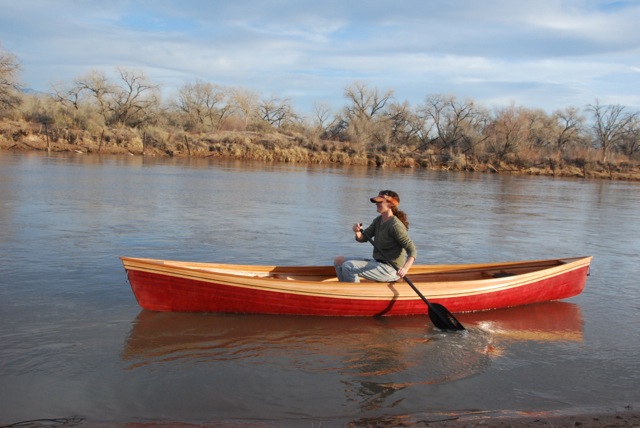
While I was building my Northwest Passage Solo canoe back in November, my girlfriend Kathi decided that she needed a canoe too, so we started looking for a design for her perfect boat. There were some parameters. She wanted it to be a tandem boat so that she could take other people out, but it also had to be light enough for her to carry. My tandem boats weigh 60 pounds and that was definitely too much for her. That meant that we were looking for a small tandem. She also wanted to be able to comfortably paddle it herself which meant that the boat needed to be kind of narrow in the middle so that she could easily reach over the gunnels with the paddle. She also wanted an all around boat that would turn nicely on rivers as well as easily track straight on the lakes. One design that kept popping up was the Mattawa which is a design by John Winters. It fit almost all of the requirements that we were looking for. The only disadvantage was that, as designed, it is almost 37" wide in the middle. That was going to make it a really stable boat, but it would be a little harder to paddle solo. After coming back to the Mattawa again and again we finally decided to build it…..but with some modifications.
Making a pair of Turkish doors with 74 panels
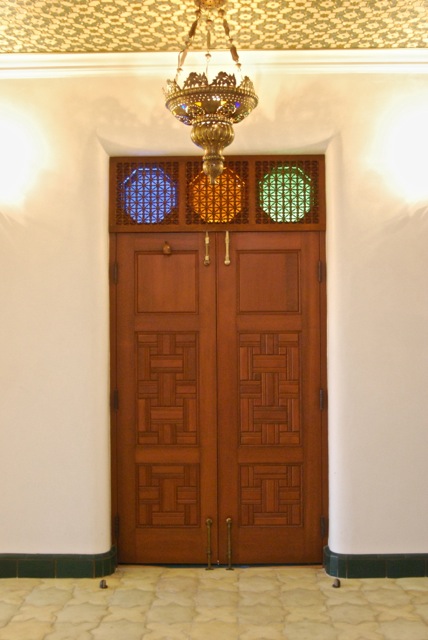
I recently contracted with a client near Santa Fe, New Mexico to build an unusual pair of doors. He had seen some doors that he liked in Turkey and wanted me to make some like them. These doors, instead of having one, two or three panels, each had 37 panels. The panels had a small 45 degree raise on them and were separated from each other by narrow muntins that had the same raise, along with a beaded profile on their face. There was clearly a lot of very precise woodworking to do here and the question on my mind was how to do it accurately and quickly.
Building a wood strip canoe part 2
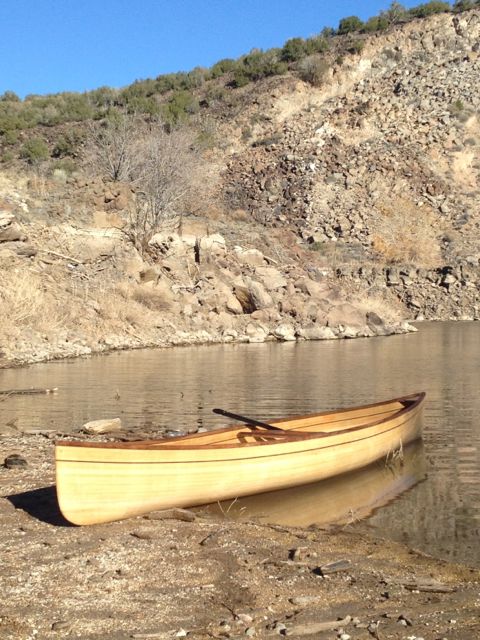
This blog post is the second half of an article about how I made a strip built canoe. If you want to catch up on the how I got to this point you can read about it in the first post. That article took us to the point where all the woodwork on the hull had been done, it was sanded and ready for fiberglass and epoxy.
Replicating historic doors
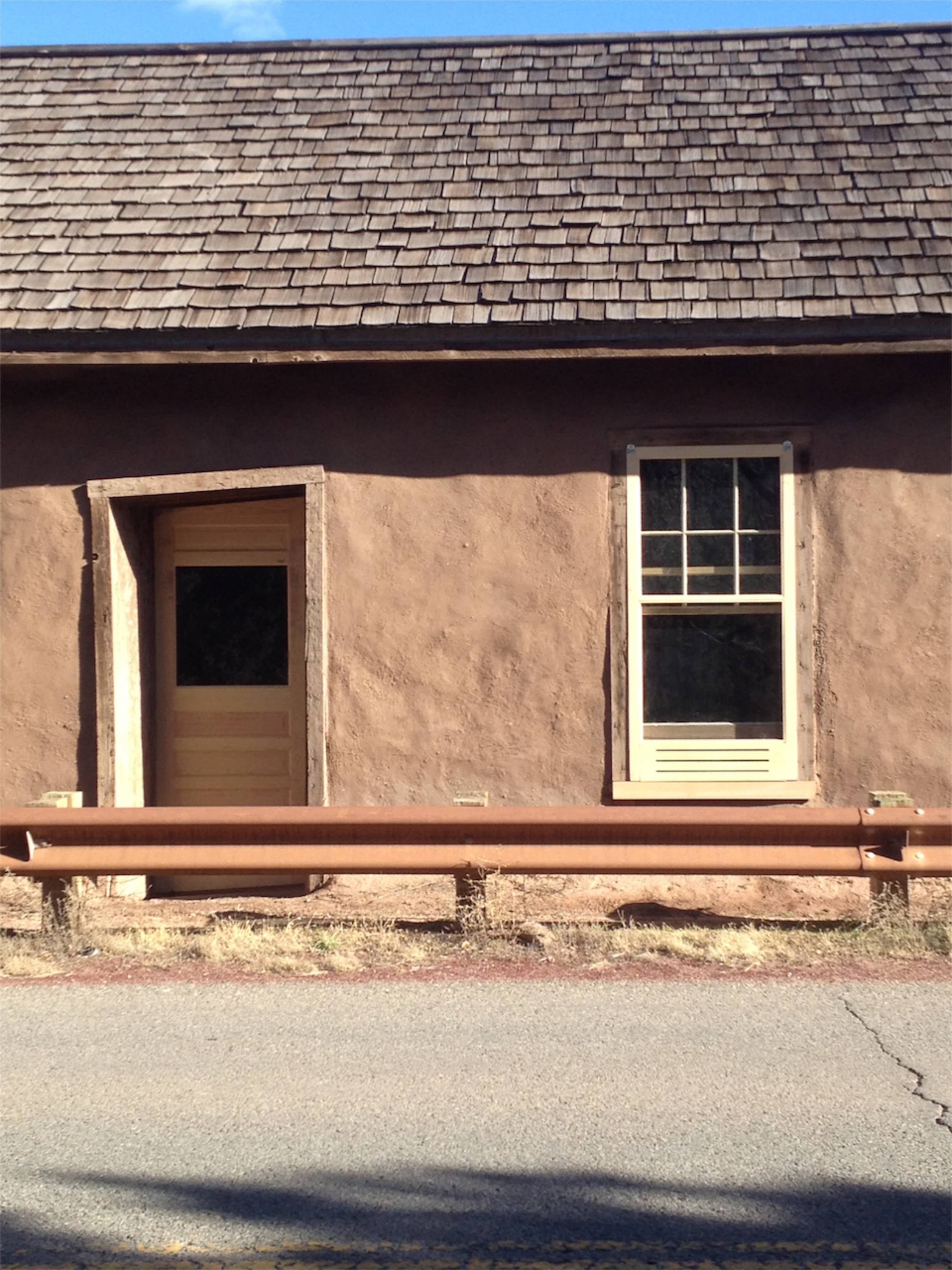
The historic Alexandre Pigeons Ranch building in Glorieta, New Mexico, is one of the last significant structures left that were involved in the civil war Battle of Glorieta. I was referred to the Pecos National Historic Park to work on repairing and replicating some doors and window sash. You can read more about the history of the building and how I replicated the historic window sash in one of my previous blog posts. This article is about how I built the doors to go in the building.
Replicating historic window sash
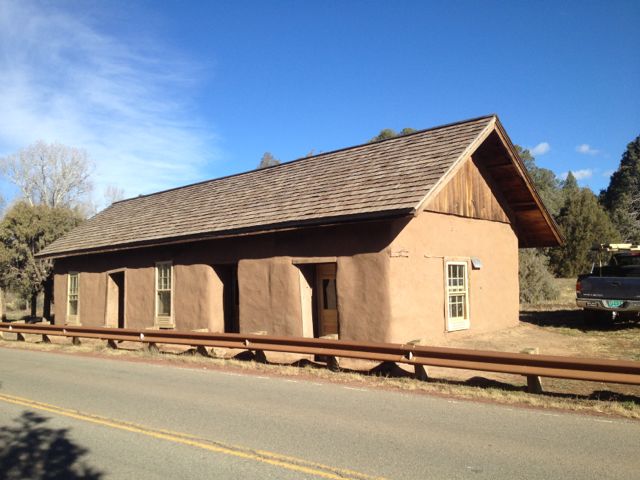
Along the side of highway 50 between Glorieta and Pecos, New Mexico, is a rundown old adobe building. I've seen it driving by for 22 years but had no idea what it was. Over the years I've seen people from the Pecos National Historic Park working on it and leading tours there. Last summer I got a call from my friend Doug Porter, who I do some historic preservation work with, and he asked me if I would be interested in replicating and repairing some historic doors and window sash at the Alexandre Pigeons Ranch. It turns out that this old building has some interesting history.
During the Civil War there was a struggle between the Confederates and the Union over control of the territories that were just being settled. The winning side would get to determine whether the territories would allow slavery or not. It would also determine who controlled the gold and silver mines of California and Colorado and the Confederates were pushing north to take Fort Union and then move up through Raton Pass to take control of Colorado. In March of 1862 there was a running battle that started in Apache canyon near Canoncito, on the west side of Glorieta pass, that ran up through the pass along the Santa Fe Trail and down toward the village of Pecos. The Confederates had their wagon train in Apache canyon and were pursuing the Union soldiers up the canyon. The heaviest fighting took place around Pigeons ranch, which served as a field hospital during the battle. Eventually the Union soldiers got up onto Glorieta Mesa, above the pass, and circled back around to Canoncito behind the Confederates where they burned the Confederates supplies and shot or scattered their horses and mules. With that the Battle of Glorieta (AKA The Gettysburg of the West) was over. Without supplies, the Confederates were forced to retreat back to Arizona territory (now southern NM) and then on to Texas, leaving the territories to the union once and for all.
Building a wood strip canoe

Relationships are a series of compromises. Your main squeeze might like to do lots of the same fun stuff that you like to do, but you can't expect that you're both going to want to do everything together. I mean, come on, get real. If you want to get a little rowdy sometimes, but they're only into the mellow contemplative stuff, then you just have to let it go. That's what your other friends are for. I'm not talking about boys and girls here, I'm talking about boats. Specifically canoes.
The shape and size of a canoe determines how it's going to behave on the water. That's probably obvious. How the shape changes the handling is less so. A boat that's long and straight along the keel line will be fast and want to track in a straight line. That's great if you're paddling into a stiff headwind on a lake but not so good if you are picking your way down a rock strewn rapid on a river. For that you need a boat that's shaped more like a banana, with the bow and stern being higher than the middle. This boat will want to pivot on the low spot on the bottom. The more "rocker" it has, the easier it will turn. A canoe with a high bow and stern will be good at pushing waves aside, but will also get shoved around by the wind; a round bottom is fast but unstable; a flat bottom wants to "stick" to the water, which is great until the waves kick up; flared sides deflect waves and add stability, but they make the boat wide and harder to paddle solo. Every decision that gets made when designing a boat affects every other detail in the boat. Compromise.
This is how a guy can end up having what some might call too many boats. What do they know? I mean, a sports car might be super fun to zip around in, but you ain't gonna haul your firewood in it. That's how you end up owning a pick-up truck as well.
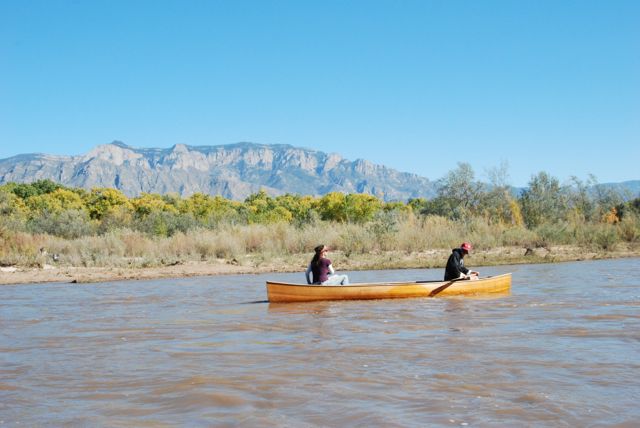
In New Mexico we are blessed with a full compliment of paddling opportunities, from lakes to class five whitewater and everything in between. I like the flat stuff. And I like the white stuff. And I have canoes for each. Recently I've been paddling the Rio Grande down around Albuquerque a lot and I've also been hankering to build another boat. But what to build?








